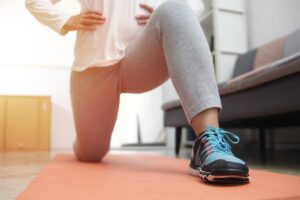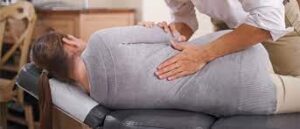Hip pain can slow you down. It makes walking harder. It affects sleep. You start to feel stiff. Some days, getting up from a chair hurts. You may wonder what to do. Should you stretch? Should you get treatment?
The truth is—you need both.
When your muscles are tight and your joints are out of place, pain sticks around. A chiropractor for hip pain can adjust your joints, but without stretching, the pain might come back. Stretching and chiropractic work best when they work together. Let’s break it down.
What’s Causing the Pain?
Hip pain has many causes. It can be from poor posture, a fall, sitting too much, or tight muscles. Some people feel it after years of sports. Others notice it after standing all day.
Sometimes, the hip isn’t even the main issue. It could start in your lower back or knee and spread. The body is all connected. If one part is off, others feel the strain.
This is why guessing rarely helps. You need to check how your body moves as a whole.
Why Stretching Helps—but Only So Much
Stretching can make your muscles feel looser. It boosts blood flow. It helps you move better. But if your joints are out of place, stretching won’t fix the root of the problem.
You might feel better for a short time. But soon, the tightness returns. That’s because the muscles are fighting poor alignment. They’re pulling in the wrong direction.
If the base isn’t steady, your muscles won’t relax. That’s where proper care steps in.
What Chiropractic Does for Your Hips
Chiropractic care works on your joints and bones. I look at how your hips and spine line up. If something is out of place, your body works harder. That’s what causes the pain.
With careful adjustments, I help realign the hips. Once the joints are in the right spot, your muscles can move more freely. You stop overworking one side. Your steps feel smoother. And the pain starts to ease.
The goal is not just to crack your joints—it’s to help your body move better.
Why Stretching and Chiropractic Work Best Together
Think of your body like a tent. If one pole is bent, the tent leans. Tight ropes can’t fix it. But if you fix the pole and then tighten the ropes, everything stands firm.
Your muscles are like those ropes. Your joints are the poles. When both are set right, the body holds strong.
That’s why I use both methods in my care plans. First, we get your joints back into place. Then we show you safe stretches to keep the muscles balanced. This mix brings faster relief and helps prevent pain from coming back.
How Soon Will You Feel Better?
That depends on the cause. If you’ve had hip pain for years, change may take time. If it’s new, results may come quicker. Most of my patients start to notice a shift after a few visits.
The key is to keep going. Stay active. Stretch often. Come in for follow-ups. The more often you stick to the plan, the more your body improves.
Pain relief is not about quick tricks. It’s about real changes that last.
Read More : Jamesburg’s Best-Kept Secret for Natural Healing
Don’t Rush the Healing
It’s easy to want fast results. But rushing can slow your progress. Try to avoid high-impact workouts or deep bending too soon. Sitting too long can also make things worse.
Move with care. Take short walks. Do light stretches. Don’t push through sharp pain. A gentle approach works best, especially in the early stages.
Your body needs time to adjust. Let it.
Safe Stretches for Your Hips
Simple stretches can help a lot. They should feel smooth, not sharp. A light pull is fine. Pain is not.
Start with short holds. Aim for 20 to 30 seconds. Work on loosening the hips, stretching the hamstrings, and moving with care. You don’t need to do a lot. Just be steady and kind to your body.
Morning or after a warm shower is often a good time. That’s when your muscles are more relaxed.
Why Hip and Knee Pain Are Linked
Your hips don’t work alone. If your knees aren’t moving right, your hips pay the price. That’s why I also check the knees when someone comes in with hip pain.
As a chiropractor for knee pain, I’ve seen this many times. A small shift in your knee changes how you walk. That change then stresses the hip.
Pain in one spot can mean trouble in another. That’s why a full-body check is part of my process.
Final Notes
Hip pain makes life harder. But it doesn’t have to stay that way. The right care can help your body heal and move better. Stretching helps. So do proper adjustments. But true results happen when you combine the two.
Many patients have told me they feel lighter, faster, and more steady after just a few sessions. They move without fear. They sleep better. They enjoy walks again.
You deserve to feel that way too. Let’s work together to get you there.
FAQs
- Can I stretch too much if my hips are not aligned?
Yes, overstretching can push the joint even more out of place. That’s why checking alignment first is key. - Why does only one side of my hip hurt?
One side might carry more weight. It could also be tighter due to how you sit or walk. A short leg or twisted pelvis could be the reason. - Does a weak core affect my hips?
Yes. If your core is weak, your hips try to make up for it. That adds extra strain. - Can sleep posture cause hip pain?
Absolutely. Sleeping on one side too much or without leg support can twist the hip and cause pain over time. - Is it common to feel sore after stretching and an adjustment?
Mild soreness is okay. It means your muscles are adjusting. But if the pain stays or grows, stop and come back in.
If your hips have been bothering you, it’s time to get help that works. Let’s build a plan that brings you relief and keeps you moving.
Book your visit today. You’ll be glad you did.






